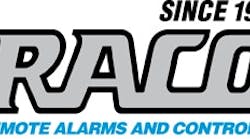On Jan. 15, 2006, a power failure at a pump station in Manhattan Beach, Calif., resulted in massive flooding. Although a SCADA system was in place to monitor and manage the wastewater collection system, an extraordinary combination of equipment and communication failures resulted in the largest wastewater spill in the county in a decade.
This event evoked disappointment from residents and environmentalists alike, and it placed the Sanitation Districts of Los Angeles County in a terribly negative spotlight. As a result, the sanitation districts quickly began looking for an alternative technology solution to provide an additional line of alarm defense and prevent a similar occurrence from ever happening again.
Search for Reliable Monitoring
The sanitation districts had experienced past success and reliability with RACO Mfg. & Engineering’s Verbatim and Guard-It monitoring products for other county uses. They also appreciated their post-sales service. Therefore, the sanitation districts immediately turned to RACO to implement a cost-efficient backup solution for their existing SCADA system.
Before a technological solution could be determined, the area’s geography and terrain had to be carefully considered. The sanitation districts provide wastewater and solid waste management for about 5.3 million people spread out across 78 cities over the 4,084 sq miles of Los Angeles County. Some of these cities and unincorporated areas are separated from the main metro complex by mountains, which could limit technological options. RACO personnel went out and visited 10 of the most critical pump station locations to fully understand the situation.
The sanitation districts’ SCADA system at the time used a landline platform; in order to ensure reliable backup, the system would need to use either private radio or wireless technology. With the mountainous county terrain, however, private radio technology would require the building of many large radio towers. This would be a slow and costly process made difficult by zoning regulations. Furthermore, beachfront real estate owners would likely have objected to new radio towers blocking their view.
After carefully weighing all of the options, RACO determined that its wireless, Web-based alarm detection and notification system, AlarmAgent.com, would be the perfect solution for the job.
RACO personnel went to the sanitation districts’ offices and gave AlarmAgent.com demos to employees, explaining the operational features and fielding questions about its operation and reliability. The company then worked on site with sanitation district personnel, taking radio frequency surveys to ensure that the signal strength requirements were available for a wireless system and that complete system-wide coverage could be achieved.
Multiple test units were supplied to critical sites and installed to test operational usage. These units were successfully tested and retested to the satisfaction of all parties involved.
Meeting Monitoring Requirements
Today, all 53 pump stations in Los Angeles County have AlarmAgent.com installed and running as a backup solution. In addition to alarm notification, the system offers performance monitoring for these pumps, measuring pump operational status, wet-well levels, facility intrusions and alarms with SCADA-like capabilities. If a pump malfunctions or a predetermined wet-well level is reached, AlarmAgent.com immediately begins a notification sequence through a chain of appropriate personnel until someone responds to the alarm.
An operations team mans a field office where all AlarmAgent.com monitoring information is displayed. This team can monitor the system’s website for alarms, acknowledge a response and coordinate response team assignments when necessary. The website also provides a history of the alarms and responses, along with pump performance statistics for review or later analysis. All of this information is available to authorized personnel from any location that has Web access. With Los Angeles County’s personnel spread out over so many locations, this has been extremely helpful.
The backup monitoring approach has already come in handy. Just hours after AlarmAgent.com was installed at a pump station on Pacific Coast Highway No. 1, a utility transformer feeding this station blew out, cutting off power and disabling the SCADA system. AlarmAgent.com was up and running, though, immediately alerting staff to the situation and providing critical status and alarm information until the power was restored.
Since then, there have been several other times when the sanitation districts’ main SCADA system has experienced system-wide downtime, both planned and unplanned. In each of these situations, AlarmAgent.com provided the necessary system-wide coverage. The continual site monitoring eliminated the need to have personnel drive to all of the sites and do visual inspections during this downtime. This provided quite a savings in personnel time, gas and vehicle expenses.
“We couldn’t be happier with what AlarmAgent.com has brought to the table,” said Jelmer Torres, supervising electrical engineer for the Sanitation Districts of L.A. County. “The units were easy to set up, cost-efficient and provide reliable working data for us. Most importantly, they gave us confidence in our system again.”
Other County Applications
AlarmAgent.com’s success on the wastewater management side of the sanitation districts caught the attention of Los Angeles County’s Solid Waste Management division. After careful evaluation and testing of its own, the division recently specified and purchased multiple AlarmAgent.com units to be installed at the largest landfill in the nation.
The Sanitation Districts of Los Angeles County continue to see RACO as a partner in providing efficient and effective monitoring solutions, all to prevent the extreme consequences of a pump malfunction going unalerted.
The security that the system provides has made the sanitation districts confident that an incident like the one that occurred on Manhattan Beach will never happen again.
Download: Here


